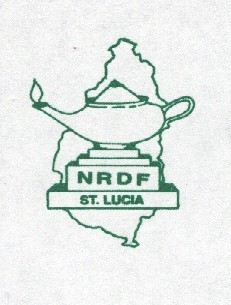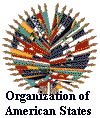NRDF Safer Housing Program--Program Review
The objective of this program review and strengthening exercise
was to develop and implement guidelines for implementation of safer housing programs for low-income
residents in the Caribbean, minimizing the environmental impact and making their
homes resilient to prevalent natural hazards and offering group property
insurance to all participants. This project is funded by the World Bank and the Government of
Brazil. [Final
Project Report]
Guidance Documents
Use of these materials: These documents were developed
with funding through the World Bank and copyright for it remains with this
institution. The materials developed under this project are intended for wide
use and distribution. To support wide use, this document may be extracted or
reproduced, as part of safer housing initiatives, provided that appropriate
acknowledgement of the source document and copyright holder is retained.
-
Guidelines for the Implementation of a Safer Housing and
Retrofit Program for Low-income Earners
-
Minimum Building Standards and Environmental
Guidelines [PDF Format]
Project Activities
1. Strengthening of the Safer Housing and Insurance Program in
St. Lucia
The objective of the first phase of this project was to review
and strengthen the existing
safer housing retrofit and loan program in St. Lucia and to reestablish the
group insurance program for low-income homeowners under this program. This
review was divided into three separate components: 1) program finances and
administration, 2) construction quality control and 3) group insurance program.
Programme Finances and Administration. A review of NRDF's existing safer housing program
was conducted to
identify the strengths and weaknesses of the existing program. The financial
review analyzed the costs of
the services provided, including estimation of work and costing of
materials, processing and management of loans, inspection and insurance.
Recommendations for improving overall
performance and effectiveness of the program are included throughout the final
report. [Terms
of Reference]
Construction Quality Control. Ensuring appropriate
quality of construction is central to the proper functioning of the HRHIP. Verification of hazard-resistant building measures is critical to the
viability of the loan and insurance pools. The quality control mechanism for retrofit
work in the current program was reviewed and recommendations for programme strengthening
developed. The roles of the estimator and
inspector were refined and training needs identified. The existing minimum standards for retrofit
(originally developed under the Caribbean Disaster Mitigation
Project) are being
reviewed and updated and environmental siting aspects have been integrated into
the new manual, which is entitled Minimum Building Standards and
Environmental Guidelines. This update will be coordinated with the safer building
curriculum development to be undertaken under the Caribbean Hazard
Mitigation Capacity Building Program (CHAMP). [Terms of
Reference]
An inquiry was also made to a metal fabrication firm in St.
Lucia regarding the potential production of hurricane straps to serve the local
and regional market.
Group Insurance Program. The previously existing group
insurance program for participants in the St. Lucia HRHIP was reviewed and
recommendations for its reestablishment were developed. A survey of homeowners' willingness to buy and pay for home
insurance was conducted as part of the overall review of program finances and
administration. A proposal to provide group insurance policies for low-income
homeowners whose homes have been strengthened was presented to local insurance
agencies in St. Lucia. In the Spring of 2003, NRDF re-established a group
property insurance cover for participants in its safer housing program. The
group insurance policy was re-established directly with The Alliance, the
original insurer of this program. This coverage expires in April 2004. Under
this group policy, the sum insured is EC $1,028,000 for concrete houses and EC
$4,637,132 for wooden houses. [Terms
of Reference]
2. Development of Environmentally-sensitive Siting Criteria
A home’s location is the primary determinant of the
forces to which it will be subject from the prevalent natural hazards. This is
particularly true of hazards with localized effects, such as flooding along
riverbanks, storm surge along the coastline, debris fall at the base of unstable
slopes and liquefaction of unconsolidated soils during seismic events. Proper
site identification and preparation can significantly reduce the
environmental impacts of housing development, by maintaining the stability of
slopes through proper cut design, retaining existing vegetation and minimizing
sedimentation caused by land clearing and grading. Strengthening existing and
new housing, both financially and structurally, also helps maintain
environmental quality by limiting the amount of new housing that is required to
replace units that are damaged or destroyed by the effects of natural hazards.
Under this project component, typical
environmental problems associated with improper housing siting were reviewed through a field assessment. Using the results of the assessment, guidelines for site selection,
land preparation and site design were developed and integrated into
the St. Lucia HRHIP. The siting guidelines pay particular attention to
steep slopes, land cutting, flooding and storm surge. The guidelines will be
disseminated to homeowners, land developers, builders, physical planners, banks
and insurance companies involved in the St. Lucia program. [Terms
of Reference]
3. Development of a Guidelines for Successful Safer and
Environmentally-sustainable Housing
Upon completion of the review and upgrading of the St. Lucia programme, guidelines for replication of this program
were developed for use by NRDF and by other safer housing programmes throughout the region.
Existing training materials for builders and inspectors/estimators,
retrofit standards, inspection capabilities and homeowner selection criteria
were refined, as were the existing administrative, financial and loan procedures
at NRDF.
The program guidelines address minimum standards
for home retrofit, revolving loan programs for safer housing retrofit and
improvement, group insurance programs for low-income homeowners, and training
requirements for estimators, inspectors and builders/artisans. Distributed as a
separate volume, the Minimum Building Standards and Environmental Guidelines
form an integral part of the programme guidance, as outlined in the Guidelines
for the Implementation of a Safer Housing and Retrofit Program for Low-income
Earners. [Terms
of Reference]
4. Targeted Implementation of Program Strengthening Measures in
St. Lucia
In the review of the safer housing program, the hiring of a
full-time building officer was identified as a critical step to strengthening
the construction quality control element of the program. The building officer
position will be responsible for assisting the homeowner with the project plan
and material selection to ensure the incorporation of safer building components;
testing the selected builder for knowledge of safer building techniques; and
inspecting the building during construction and upon completion for compliance
with safer building standards. Initial funding for this position has been
identified through an EU-funded housing program. NRDF added a full-time building
officer to its staff in August 2003.
Last Updated 10 September 2003

